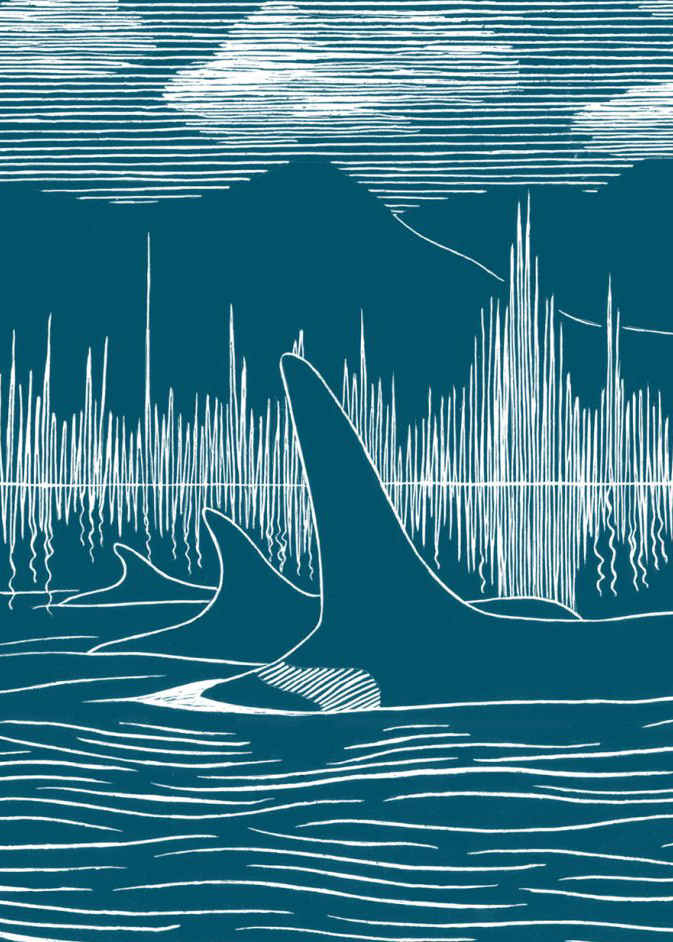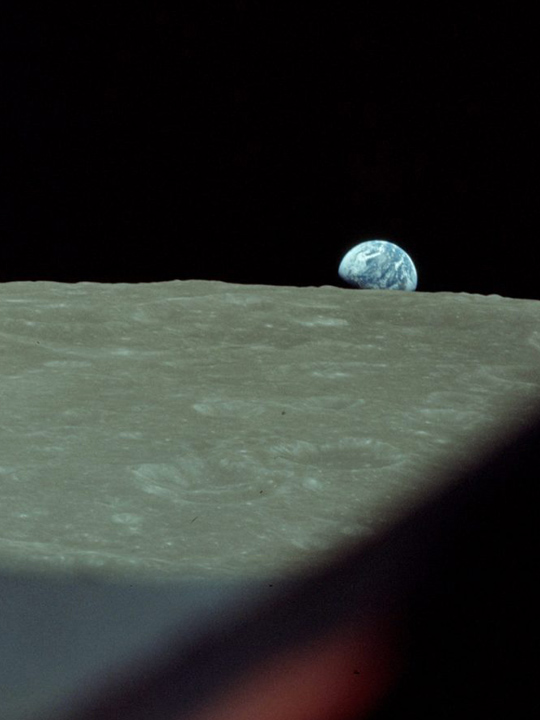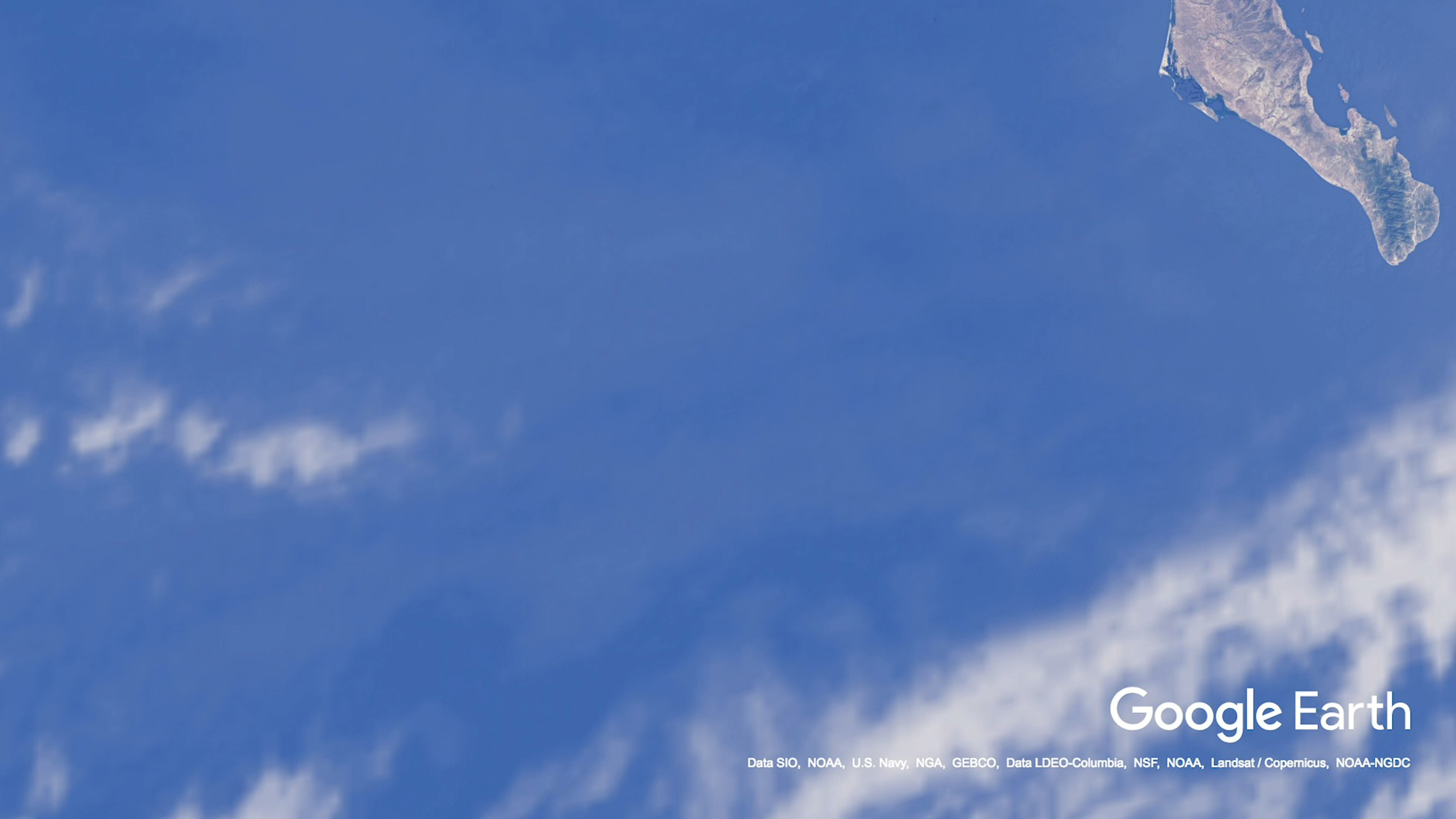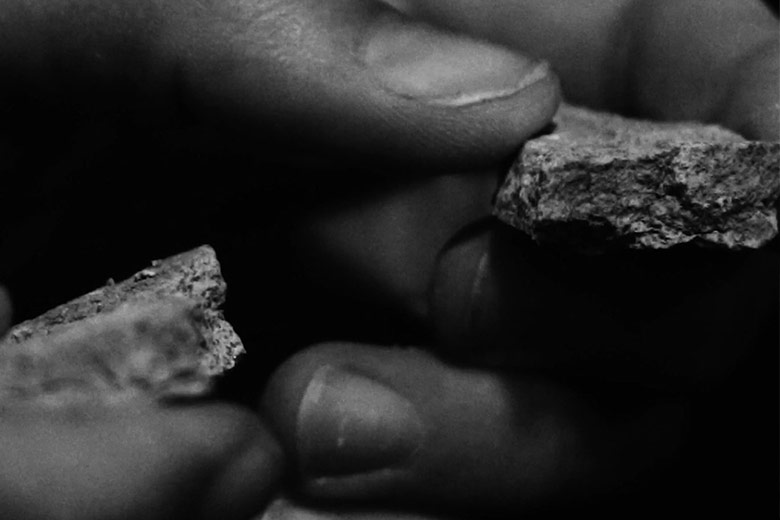
James Nestor is an author and journalist who has written for National Public Radio, The New York Times, The Atlantic, and more. His book DEEP: Freediving, Renegade Science, and What the Ocean Tells Us About Ourselves was a finalist for the PEN American Center Best Sports Book of the Year and a New York Times Book Review Editor’s Choice. In 2017, Nestor and National Geographic Explorer and marine scientist David Gruber launched CETI (Cetacean Echolocation Translation Initiative), a nonprofit research group that develops and employs technologies to decipher the language of sperm whales.
After a powerful encounter with a sperm whale, James Nestor embarks on a quest to understand echolocation. He suggests that if we step away from the technologies we’ve come to rely on, we may discover senses long forgotten.
A while back, some fifty million years ago, a grubby rat-like animal called Indohyus stood on the shore of a swamp and looked at its own reflection in the water. It was hot, some twenty degrees warmer on Earth than it is now. The water must have looked refreshing, and safer. While the dinosaurs were all gone, wiped out fifteen million years earlier by changes in climate or disease or an asteroid or volcano or all of these things, the beasts that came to replace them were just as lethal. Saber-toothed cats, cave bears, and giant Titanoboa snakes—they were all hungry for flesh, and the Indohyus was easy prey.
The Indohyus jumped in. More and more joined and they began eating surface vegetation. When that was all gone, they dived down to eat submerged plants. Over time, their bodies adapted to the watery environment. Their fur disappeared, a dense, heavy outer layer of flesh covered their limbs, their tales flattened and widened allowing them to stay down on the swamp floor more easily and swim faster in the water. They learned to hold their breath longer, and to dive deeper. They taught themselves how to chew and swallow beneath the surface. They started eating not just plants and moss but other animals: fish, crustaceans, and more.
The Indohyus became such efficient aquatic hunters that, after a while, they didn’t bother going up to land anymore. From swamps to streams, from rivers to the crashing waves of the wide open ocean, they flourished. The Indohyus became an ocean animal, and other adaptations took place: limbs completely disappeared and nostrils moved to the top of their heads. They doubled, tripled, and quadrupled in size. Eventually, the Indohyus wasn’t an Indohyus at all but an entirely new animal, an enormous tube of flesh and fins. These were the first whales.
Whales were efficient and deadly hunters, but they could only see well at the surface—far above the deep water, which housed the most plentiful food sources. Their eyes couldn’t see well enough in the dark, so whales learned to listen carefully, not with their ears but with their facial bones. They’d learn to send out a sharp “click” from deep inside their noses and then collect the echoes of those clicks in their jaws and teeth. They’d piece these echoed clicks together to form a picture of everything around them—a natural form of sonar.
Twenty-seven million years later, these ancient sonar clicks were rattling my own facial bones, jaw and teeth. It was 2013, and I was off the coast of Sri Lanka, surrounded by the ancestors of that grubby, furry, rat-like Indohyus. I was freediving within a pod of sperm whales. The little fangs of the Indohyus had been upgraded to eight-inch-long teeth that were chomping in my direction. The egg-sized brain had turned into the largest brain ever to have existed on Earth, some six times the size of our own. And the innocent little meow or whatever the Indohyus had once used to scare off predators was now a thunderous click, a kind of underwater sonic boom that is the loudest animal sound on the planet, capable of blowing up eardrums and shaking a human body to death.
Whales learned to listen carefully, not with their ears but with their facial bones.
One after the other, these clicks—pop! pop! pop!—vibrated my body to the core. Sperm whales can use these clicks to home in on a human in the water from a mile away. They are able to look not only at you but through you, a kind of X-ray sonographic vision, or what’s more commonly known as echolocation. What immediately struck me as I withstood one volley of sonic blasts after another was how powerful this sight of sound was. I could feel myself being seen in a way that I had not fully grasped as being possible, until that moment.
Later, back on the surface, I found myself wondering why it was only the descendants of the grubby Indohyus who had developed this astonishing, supersonic vision. Such a powerful sense would be a huge advantage for other animals as well, after all. Bats used it, I knew that. But why weren’t other animals echolocating too?
I learned soon after that many animals were echolocating, and had been for millions of years. Swiftlets, along with sixteen other bird species, send out little click-type sonar signals from their beaks and listen to their echoes, using this sense to navigate through dark nights or dimly-lit forests or caves. Shrews, the small mole-like animals similar in many ways to the ancient Indohyus, use modulated frequencies to echolocate through tunnels and holes. Even rats echolocate; scientists made this discovery in the 1950s when they blinded rats and watched as they navigated a complicated maze.
The most sophisticated terrestrial echolocators are bats, which can send an astonishing 200 clicks per second in a spectrum of bursts ranging from 14,000 to 100,000 Hz (humans can only hear up to around 20,000 Hz). With this highly-evolved form of echolocation, bats thrive in total darkness. What’s more, fossil records show that bats likely evolved echolocation about fifty million years ago, right around the time that the little Indohyus was first getting its feet wet.
Whales do it, dolphins do it, shrews do it, bats do it, rats do it. We do it too. Humans have been echolocating for hundreds perhaps thousands of years or even longer.
One of the first written accounts of human echolocation was in the mid-1700s, when French philosopher Denis Diderot penned an essay about it, “Letter on the Blind for the Use of Those Who Can See,” where he describes a blind acquaintance who had an astonishing ability to locate objects and estimate their distance:
The blind man of Puiseaux estimates the nearness of fire by the heat; and of a vessel being full by the noise made when pouring liquid; and he estimates his nearness to objects by the action of the air on his face. He is so sensitive to the least changes in the currents of air that he can distinguish between a street and a cul-de-sac.
The essay eventually landed Diderot in prison, not for the notes on human echolocation, but for the atheistic views he sprinkled between descriptions.
A century later, around 1820, James Holman, a blind adventurer and prodigious ladies’ man, traveled the world alone using echolocation. Neither Holman, Diderot, nor anyone else called his blindsight echolocation, because no one could accept that such a mysterious sense could exist. Scientists believed the blind instead were able to feel the pressure of objects around them on their face, something called “facial vision.” In 1941, a group of researchers led by psychologist Karl Dallenbach at the Cornell Psychological Laboratory decided to test exactly how “facial vision” actually existed.
Dallenbach gathered a group of blind people and had them approach a wall. The subjects were asked to raise their left arms when they “saw” the wall, then to raise their right arms when they were about to the hit the wall. The blind subjects succeeded in perceiving the wall from dozens of feet away, and they stopped just inches before colliding with it. The experiment was repeated with sighted subjects who were blindfolded. The sighted subjects weren’t as adept as the blind, but they succeeded in “sensing” the wall at a distance and up close just the same. When Dallenbach plugged the ears of the subjects and had them repeat the exercises, they were no longer able to do it. Their “facial vision” had disappeared.

Image from “Facial Vision” (1941).
Courtesy of The Virtual Laboratory
It wasn’t facial vision that allowed the blind—and anyone else—to see; it was the “sixth sense” of echolocation. Humans have it too, and the more we hone it, the more we learn to listen, the better we can “see.” This sense can become so perceptive that some human echolocators can tell the difference between a glass and wood door from two dozen feet away; they can pick out a Rubik’s Cube from a tennis ball across the table or discern whether or not there’s a car parked in a driveway from hundreds of yards away.
“If something looks soft, it will sound soft,” said Brian Bushway. Bushway, who is in his late thirties and sports a disheveled mop of hair, lost his sight when he was fourteen while suffering from a rare disease that destroyed the optic nerves in both his eyes. Bushway was devastated and stayed home for months. But eventually, he slowly began “seeing” what looked like staticky, black-and-white images in his head.
It started while he was at school. Walking with a guide down a hall, he suddenly “saw” a pillar. Not just one, but several pillars surrounding him. As he approached a little closer, he realized that he was picking up on echoes of his shuffling feet and using these sounds to form a sonographic picture of his surroundings. “I wasn’t touching them,” he told me. “I was five feet away, but I swore I could see them.” Bushway had, unwittingly, evolved a sense of echolocation.
Working with blind activist Daniel Kish, Bushway quickly developed a fully functional form of sonographic sight. He learned to emit a short, sharp click with his tongue and then home in on the echoes and form an acoustic image of his surroundings. Weeks later he was shooting basketball hoops, skateboarding, and rollerblading. He was dashing down trails on a mountain bike, riding down staircases. Bushway had, in many ways, evolved a new way of seeing—only his brain was now using the frequencies of sound rather than the frequencies of light. When researchers placed blind human echolocators into MRI machines and recorded the activity in their brains as they echolocated objects around them, they discovered that the visual cortexes lit up. In other words, the sonographic images that Bushway, Kish, and other echolocators were processing in their brains were no different than those sighted people process. They were seeing the world, not through their eyes but with their ears.
Bushway and Kish now lead an international nonprofit organization called World Access for the Blind, which teaches thousands of blind people echolocation. “When you go blind, the blind community gives you a cane, a dog, shows you how to go to the post office and a restaurant, then come home,” said Bushway. Human echolocation was a way to help people regain total freedom, to see in the dark.
Blindness for Bushway and other human echolocators wasn’t so much a handicap as it was a catalyst, a way to kick-start an evolutionary adaptation that all humans have but so few of us have ever bothered using. It’s the same adaptation that bats figured out fifty million years ago and used to take over some of the darkest most extreme environments, the same evolution that the marine cousins of those little furry Indohyus, the whales, adapted two dozen million years later.
These senses have atrophied in most of us, but they haven’t gone away.
I can’t help but wonder how many other senses these distant animals might have accessed hundreds, thousands, or millions of years ago as they made their way across the deserts and forests, through the rivers and oceans, to where we all are now. And I can’t help but wonder about the “six senses” that still lurk within us.
For tens of thousands of years, cultures around the world accessed an ancient aquatic reflex to freedive hundreds of feet deep for minutes at a time to gather food from the seafloor. Ancient sailors and hunters likely homed in on the subtle energy of Earth’s electromagnetic field and used it as a compass, a natural form of GPS called magnetoreception. (Butterflies use magnetoreception to migrate thousands of miles. So do birds, turtles, whales, and more. Even bacteria have magnetoreceptive abilities, and all of these life-forms still use it every moment of every day of their lives.)
The modern world of electric lights, mobile phones, and fishing technologies made freediving, human magnetoreception, and echolocation appear unnecessary. These senses have atrophied in most of us, but they haven’t gone away. Relearning them is easy. Splash some water on your face or dive beneath the surface, and you will instantly re-awaken the aquatic triggers to hold your breath and dive deep. A few moments of quiet focus and chances are you’ll find True North—without ever opening your eyes.
It’s something I felt following Brian Bushway around the streets of Los Angeles, or rediscovering my own aquatic reflexes through freediving, or floating face-to-face with the world’s largest—and loudest—predator. These senses may be hidden, but that doesn’t mean they’re not still there. Rediscovering them connects us to our past and to the living world now around us, and reminds us that we are still tuned in to the subtler rhythms of Earth.
It’s something that I, that anyone, can experience anytime and anywhere by simply taking an easy breath, turning off the noise of the outside world, and letting our bodies do what they have naturally evolved to do. Just click.







